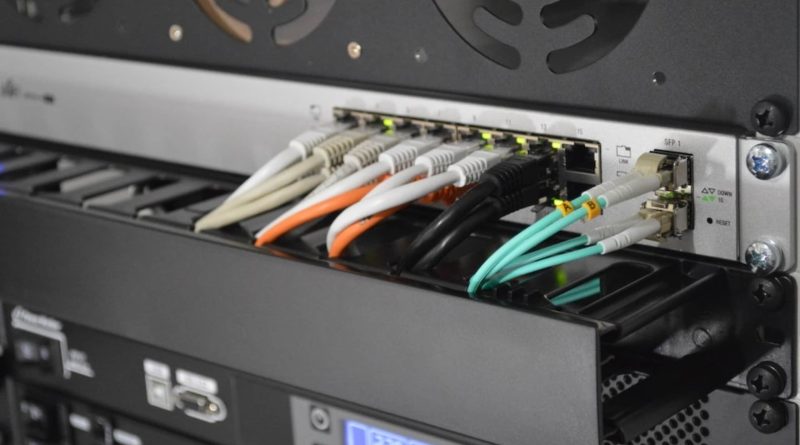Why Refurbished Hardware is a Smart Choice for Businesses
Technology is not just an advantage; it’s a necessity. Proper hardware is critical for productivity, security, and growth from startups to large corporations. However, as technology continues to evolve, so does the cost of keeping up with it. High-end laptops, servers, and other essential hardware can significantly bite a company’s budget. Enter refurbished hardware, a solution that allows businesses to equip themselves with high-quality technology at a fraction of the cost. But why exactly is refurbished hardware an intelligent choice for businesses? Let’s explore this in detail.
Cost-Effectiveness: Stretching Your IT Budget Without Compromising on Quality
One of the most compelling reasons businesses buy refurbished equipment is cost-effectiveness. New technology comes with a hefty price tag, and these costs can be prohibitive for many companies and tiny and medium-sized enterprises (SMEs). Refurbished hardware allows access to top-tier technology at a significantly reduced price.
Businesses often need to upgrade or expand their IT infrastructure, and buying new can strain financial resources. Refurbished options allow companies to acquire what they need without compromising on quality. These products often come from reputable manufacturers, and before being resold, they undergo rigorous testing and refurbishment processes to ensure they are in good working order.
This doesn’t mean settling for less; refurbished hardware can often perform just as well as new hardware. Much of the refurbished equipment comes from corporate environments where it has been used minimally before being upgraded or from surplus inventory. As a result, companies can save a substantial amount on IT costs while still meeting their technological needs.
Environmental Responsibility: Reducing E-Waste and Promoting Sustainability
In an age where environmental responsibility is increasingly important, businesses are under pressure to adopt more sustainable practices. Refurbished hardware is an excellent way for companies to reduce their ecological footprint. By opting for refurbished devices, businesses help lessen the demand for new electronics, decreasing the amount of electronic waste (e-waste) generated.
E-waste is a significant global issue. It contributes to landfill overflow and releases harmful substances into the environment, such as lead, mercury, and cadmium, which can contaminate soil and water. By choosing refurbished hardware, companies actively participate in the circular economy—recycling and reusing products instead of discarding them. This reduces the overall demand for raw materials and the energy-intensive processes required to produce new electronics.
Moreover, many businesses are now required to meet specific sustainability goals, and purchasing refurbished hardware can contribute to these targets. It’s a step towards corporate social responsibility (CSR) that resonates well with environmentally conscious consumers and partners. Adopting greener practices, like using refurbished equipment, not only helps the planet but also enhances a company’s reputation in an increasingly eco-aware market.
Reliability and Warranty: Peace of Mind With Refurbished Technology

One common concern about refurbished hardware is reliability. However, this concern is largely unfounded. Reputable refurbishers ensure that all hardware undergoes thorough testing and quality control before it is sold. This process involves repairing or replacing faulty components, upgrading outdated parts, and thoroughly cleaning the devices. As a result, refurbished hardware is often as reliable as new hardware.
In addition, many refurbished products come with warranties comparable to those offered with new devices. These warranties provide businesses with peace of mind, knowing that if something does go wrong, they are covered. Some refurbishers even offer extended warranties or service plans, allowing companies to protect their investments further.
It’s also worth noting that the original manufacturers authorize many refurbishers. This means they have access to genuine parts and are held to the same standards as the original manufacturers’ service departments. This reliability and support make refurbished hardware viable and attractive for businesses looking to maintain a robust IT infrastructure without the high costs of new equipment.
Technology Refresh Cycles: Staying Current Without Breaking the Bank
In the ever-evolving world of technology, staying current can be challenging for businesses. New hardware and software are constantly being released; keeping up with these changes can be expensive. However, companies can implement more frequent technology refresh cycles without breaking the bank by opting for refurbished hardware.
With refurbished hardware, companies can afford to upgrade their equipment more regularly, ensuring they always work with relatively modern technology. This can be particularly beneficial for businesses relying on the latest software or maintaining compatibility with clients and partners using the latest technology.
Furthermore, because refurbished hardware is more affordable, businesses can diversify their technology portfolio. Instead of investing heavily in a few high-end devices, companies can equip their teams with various tools tailored to different tasks while staying within budget. This flexibility enables businesses to adapt quickly to changes in the industry and to the specific needs of their workforce.
Customization and Flexibility: Tailoring IT Solutions to Fit Your Business
Another advantage of choosing refurbished hardware is the level of customization and flexibility it offers. New hardware often comes with limited configurations, and customizing these devices can be expensive. On the other hand, refurbished hardware provides a wider variety of configurations at lower prices, allowing businesses to tailor their IT solutions to meet their specific needs.
For instance, a company might need a batch of laptops with more RAM for their design team but less powerful machines for administrative tasks. With refurbished hardware, businesses can find precisely what they need without paying for unnecessary features. This flexibility ensures that companies only invest in technology that directly benefits their operations.
Additionally, because refurbished hardware is readily available in various specifications, businesses can quickly scale up or down as needed. Whether expanding a team or adapting to seasonal changes in demand, refurbished options provide the agility to meet changing business requirements without the long lead times and high costs associated with new hardware purchases.
Access to Legacy Technology: Supporting Older Systems and Software
In some industries, businesses rely on legacy systems or software incompatible with the latest hardware. This can be particularly challenging when newer devices no longer support these older technologies. Refurbished hardware provides a solution by offering access to older models that are still compatible with legacy systems and software.
This is crucial for businesses that cannot completely overhaul their IT infrastructure but must maintain compatibility with their existing systems. Specific industries, such as manufacturing, healthcare, or finance, might use specialized equipment or software that is not easily updated or replaced. By purchasing refurbished hardware, these businesses can continue to operate smoothly without needing costly upgrades or the risk of compatibility issues.
Moreover, refurbished hardware can be a lifesaver for companies that need to replace outdated equipment but don’t want to disrupt their existing systems. Instead of trying to retrofit new technology to work with old systems, businesses can find refurbished models that seamlessly integrate with their current setup, ensuring continuity and reducing downtime.
Reducing Depreciation: Protecting Your Investment Over Time
One of the often-overlooked benefits of purchasing refurbished hardware is the reduced impact of depreciation. New hardware begins to lose its value the moment it is purchased. This depreciation can represent a significant loss for businesses, especially when equipment needs to be replaced every few years.
On the other hand, refurbished hardware has already undergone its initial depreciation. When a business purchases refurbished equipment, it buys at a point where the depreciation rate has slowed significantly. This means that if the company needs to resell or upgrade again in the future, the loss in value will be much less pronounced.
This approach saves money initially and helps protect the business’s long-term investment in technology. By minimizing depreciation, companies can reallocate funds that would otherwise be lost to depreciation into other areas of growth and development.
The Availability of High-Quality Brands: Accessing Premium Technology on a Budget
Another compelling reason refurbished hardware is a smart choice for businesses is the opportunity to access high-quality, premium brands that might otherwise be out of reach due to budget constraints. Top-tier brands like Apple, Dell, HP, and Lenovo are known for their durability, performance, and customer support, but they also come with a premium price tag.
Refurbished hardware allows businesses to purchase these brands at a significantly reduced cost, making it possible to equip the office with reliable, high-performance devices without breaking the bank. This is particularly beneficial for businesses that require high-end specifications for tasks such as graphic design, video editing, or software development, where performance and reliability are paramount.
Moreover, because these premium brands are built to last, refurbished models often have a longer lifespan than new, lower-end devices. This means businesses can enjoy the benefits of top-quality technology while adhering to a budget-friendly approach. Accessing premium brands without the associated costs opens up new possibilities for business companies to improve their IT infrastructure.
Boosting Business Agility: Quick Deployment and Expansion Capabilities
In today’s dynamic business environment, agility is critical. Companies need to be able to respond quickly to market changes, scale operations, or pivot to new strategies. Refurbished hardware supports this agility by providing a fast, cost-effective way to deploy or expand technology infrastructure.
Refurbished hardware offers a quick solution when businesses need to scale up—whether due to growth, seasonal demand, or a new project. Instead of waiting weeks or months for new equipment to be delivered and set up, companies can source refurbished hardware and have it operational in a fraction of the time. This rapid deployment capability ensures businesses can capitalize on opportunities without being held back by IT constraints.
Similarly, refurbished hardware provides the flexibility to set up temporary workspaces or expand into new markets without a significant upfront investment for businesses that need to remain nimble and adaptable as they grow. This is particularly advantageous for startups and smaller companies that must stay agile and adaptable as they grow.
Support and Resources
A common misconception about refurbished hardware is that it comes with less support than new equipment. Many refurbishers offer extensive support options, including setup assistance, technical support, and extended warranties. This level of support is crucial for businesses that rely on their IT infrastructure to operate efficiently.
Refurbished hardware is often supported by the same service networks as new equipment, especially if purchased from an authorized refurbisher. This means businesses can access manufacturer support and purchase additional service plans to protect their investment further.
Furthermore, refurbishers often have specialized knowledge of the products they sell, offering valuable expertise that can help businesses optimize their IT infrastructure. This can include advice on choosing the proper configurations, ensuring compatibility with existing systems, and providing ongoing maintenance and support. Leveraging this expertise allows businesses to make informed decisions and get the most out of their refurbished hardware.
Contributing to the Circular Economy: A Sustainable Business Practice
The circular economy is an economic system that minimizes waste and maximizes resources. It contrasts with the traditional linear economy, which follows a ‘take, make, dispose’ pattern. By choosing refurbished hardware, businesses actively contribute to this sustainable model.
In the circular economy, products and materials are kept in use for as long as possible, and when they reach the end of their life, they are repurposed or recycled into new products. Refurbished hardware fits perfectly into this model, as it involves taking previously used devices, restoring them to good working condition, and putting them back into circulation.
For businesses, participating in the circular economy is not just about reducing waste; it’s also about fostering a sustainable and ethical business practice. This can positively impact the company’s brand, as more consumers and clients are looking to do business with companies that prioritize sustainability. By integrating refurbished hardware into their IT strategy, businesses can align themselves with these values while benefiting from cost savings and operational efficiency.
Conclusion
Refurbished hardware offers a myriad of benefits for businesses of all sizes. From cost savings and environmental responsibility to reliability and flexibility, refurbished technology provides a viable alternative to purchasing new. It allows companies to access high-quality equipment, stay current with technology trends, and maintain compatibility with legacy systems while reducing their environmental impact and supporting the circular economy.
Refurbished hardware is a smart, sustainable, and strategic choice for businesses looking to maximize their IT budget, enhance their sustainability efforts, and remain agile in a competitive market. It’s a solution that meets the demands of modern business without the drawbacks of high costs and rapid depreciation, making it ideal for companies that want to equip themselves for success in today’s technology-driven world.




